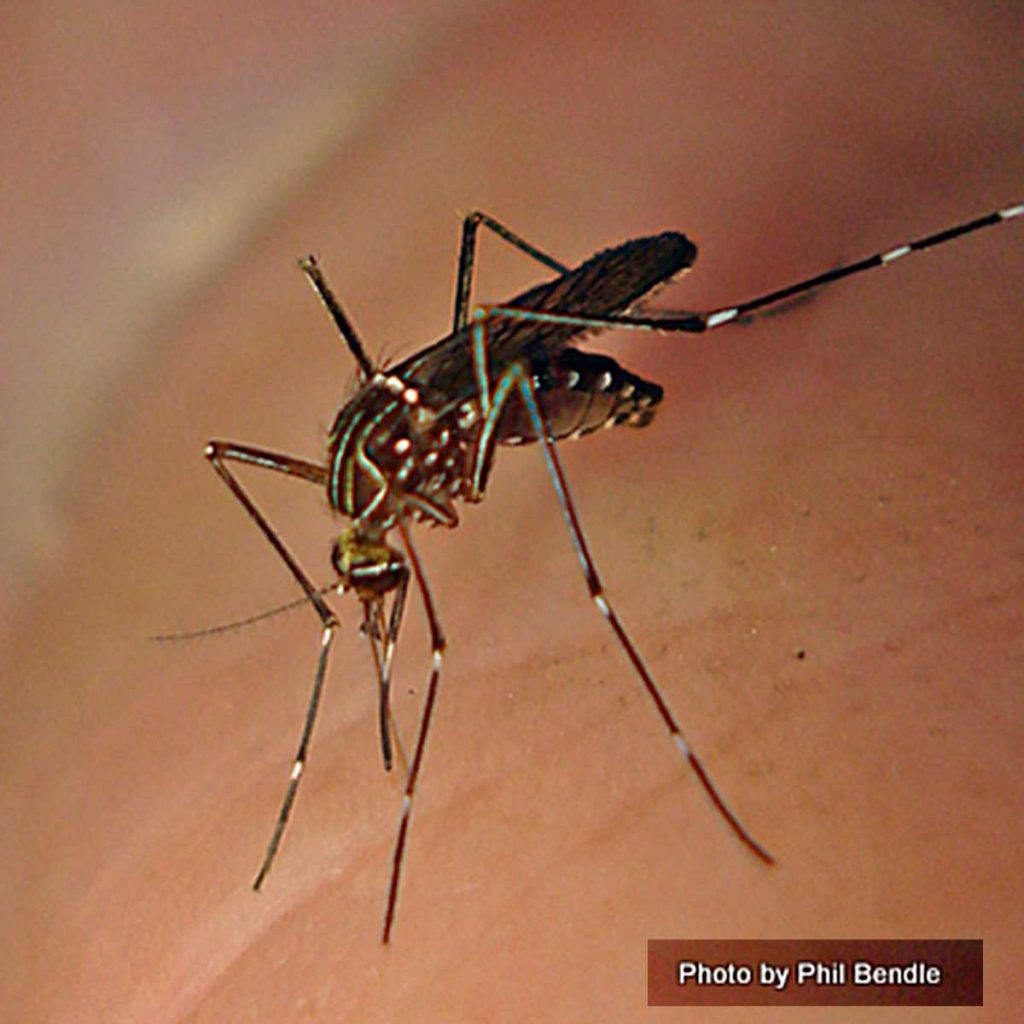
Insects / Mosquito
Information for Juniors
Mosquito
- NZ has 16 species of mosquito
- The Māori name is waeroa.
- Twelve are unique to NZ.
- They are about 5 millimetres long.
- The female bites. It leaves and itchy welt or raised bump.
- The males feed on flower nectar.
- The mosquito inhabits swamps, lakes and still water.
- Mosquitoes have a 4-stage life cycle: egg, larvae, pupa and adult. The adult is the only one above the water.
- Females lay their eggs in still water and the eggs hatch 2 weeks later.
- The eggs are dropped into the water as the females fly over
- The larvae last about 2 weeks and hatches with a well-developed head with mouth, large thorax and a segmented abdomen but no legs!
- The pupa is shaped like a comma with a head and thorax at the fat end and the abdomen curved underneath. They swim by flipping its abdomen.
- They need to come to the surface to breathe.
- The pupa does not feed
- The adult emerges from the pupa in about a week.
- Adults mate a few days after emerging and die about 7 days later.
- Blood is their favourite food. However, they feed on aphid honey dew and nectar.
- Their mouth parts are adapted to pierce skin and suck juice.
- The female, after dropping her eggs, will remate and the cycle repeats, but not much longer than 3 weeks.
- The mosquito has eyes and long, many segmented antennae their job is to detect odours.


Information for Junior Secondary
Mosquito
- NZ has 16 species of mosquito
- The Māori name is waeroa.
- Twelve are unique to NZ.
- They are about 5 millimetres long.
- The female bites. It leaves and itchy welt or raised bump.
- The males feed on flower nectar.
- The mosquito inhabits swamps, lakes and still water.
- Mosquitoes have a 4-stage life cycle: egg, larvae, pupa and adult. The adult is the only one above the water.
- Females lay their eggs in still water and the eggs hatch 2 weeks later.
- The eggs are dropped into the water as the females fly over
- The larvae last about 2 weeks and hatches with a well-developed head with mouth, large thorax and a segmented abdomen but no legs!
- The pupa is shaped like a comma with a head and thorax at the fat end and the abdomen curved underneath. They swim by flipping its abdomen.
- They need to come to the surface to breathe.
- The pupa does not feed
- The adult emerges from the pupa in about a week.
- Adults mate a few days after emerging and die about 7 days later.
- Blood is their favourite food. However, they feed on aphid honey dew and nectar.
- Their mouth parts are adapted to pierce skin and suck juice.
- The female, after dropping her eggs, will remate and the cycle repeats, but not much longer than 3 weeks.
- The mosquito has eyes and long, many segmented antennae their job is to detect odours.


Information for Senior Secondary
Mosquito
- NZ has 16 species of mosquito
- The Māori name is waeroa.
- Twelve are unique to NZ.
- They are about 5 millimetres long.
- The female bites. It leaves and itchy welt or raised bump.
- The males feed on flower nectar.
- The mosquito inhabits swamps, lakes and still water.
- Mosquitoes have a 4-stage life cycle: egg, larvae, pupa and adult. The adult is the only one above the water.
- Females lay their eggs in still water and the eggs hatch 2 weeks later.
- The eggs are dropped into the water as the females fly over
- The larvae last about 2 weeks and hatches with a well-developed head with mouth, large thorax and a segmented abdomen but no legs!
- The pupa is shaped like a comma with a head and thorax at the fat end and the abdomen curved underneath. They swim by flipping its abdomen.
- They need to come to the surface to breathe.
- The pupa does not feed
- The adult emerges from the pupa in about a week.
- Adults mate a few days after emerging and die about 7 days later.
- Blood is their favourite food. However, they feed on aphid honey dew and nectar.
- Their mouth parts are adapted to pierce skin and suck juice.
- The female, after dropping her eggs, will remate and the cycle repeats, but not much longer than 3 weeks.
- The mosquito has eyes and long, many segmented antennae their job is to detect odours.


Activities
- Give 4 reasons why the mosquito bites
- What are the antennae used for?
- Research a mosquito’s eye, draw a model and add descriptors that show that you have found some good information.
- Why do you think God created mosquitoes?
- Do both male and female make buzzing noises?
